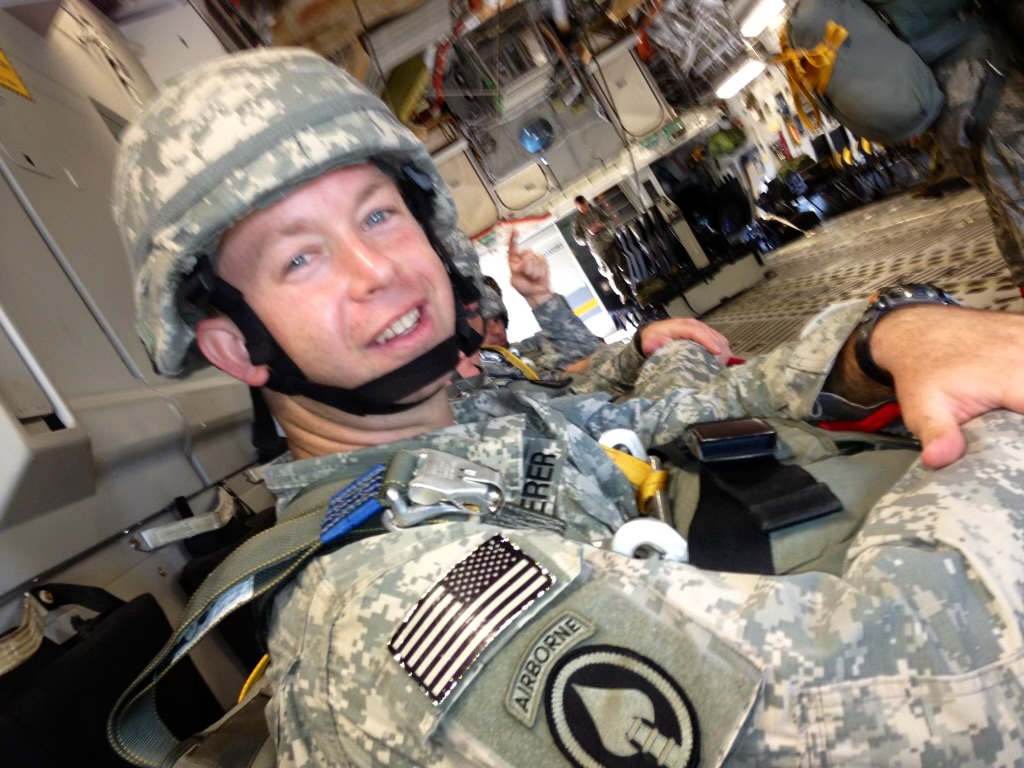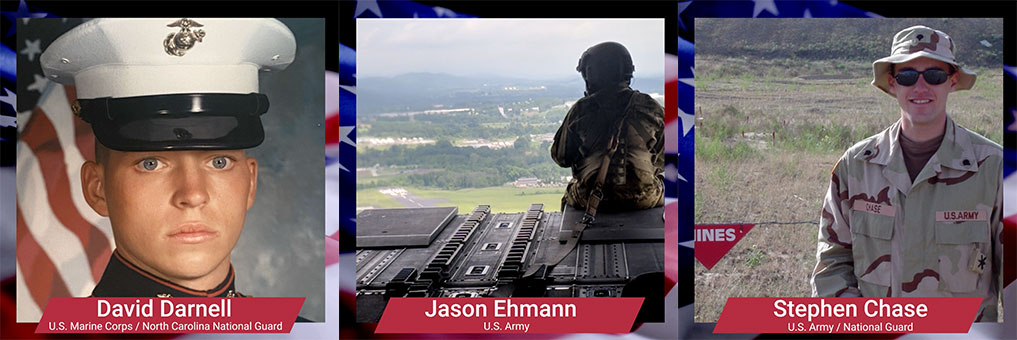When Rich Evans graduated from Lakeland University in May 2001, he was excited to embark on his new career as a secondary English teacher.
A Promising Path from Military Service to Vegetation Management
 Lewis Regional VP Rich Evans (then Army Captain) with Afghan Colonel Mirwaiz
Lewis Regional VP Rich Evans (then Army Captain) with Afghan Colonel Mirwaiz
Looking back, Evans never could have predicted how short-lived that career would be. When the Twin Towers were hit on 9/11 and our country suffered its worst assault in American history, Evans’ future as a high school teacher abruptly ended. Two days after the terrorist attacks, Evans joined the Army and began a different type of service—this time trading his classroom for barracks, and literary classics for field manuals.

Though some may wonder how military tenure translates to leadership roles in vegetation management, the experiences and skills are quite complementary and transferrable.

Fifteen years and four tours later, Evans was nearing the end of his active military service and contemplating where the next chapter would lead, when he was contacted by Alliance Careers—a well-respected recruitment company that assists Junior Military Officers (JMOs) with career placement as they transition to the private sector. Founded by John Todd in 2003, Alliance partners with 300 top-performing JMO candidates each year to provide customized support in preparation for the transition.
For Evans, his partnership with Alliance led to a promising career in vegetation management with Lewis Services where he now serves as a Division Manager (DM) in Florida. As a DM, Evans oversees more than 250 employees and works with major utility companies and municipalities across the state. Reflecting on his time in the military, Evans draws distinct parallels between military service and utility vegetation management (UVM) especially when it comes to creating adaptive learning environments in variable conditions. Evans also credits the military for helping him hone leadership skills that have been critical when leading a distributed workforce.

Navigating the Post-Service Path
My personal path from military service into vegetation management work took a slightly different route. After serving in the Navy for eight years, I attended the University of Southern Florida’s Muma College of Business and earned a bachelor’s degree in Business/Managerial Economics while participating in the Reserve Officers Training Corp (ROTC)—a program designed to train college students for future service as officers in the military. Following graduation, I served in the Army for four years and finished my twelve years of combined military service as a combat veteran.
Similar to my fellow veteran and now colleague, Rich Evans, I was unsure about my next chapter as a civilian. Rich and I were not alone in this uncertainty. For many veterans who are finishing their active military service, the path can be challenging. In her article “Transition to Civilian Life Remains Difficult Years After Military Discharge”, Mary Anne Dunkin writes that more than 200,000 service members leave the United States military each year. She notes that, for many, this transition includes challenges related to physical and mental health, difficulty with interpersonal relationships—and an uncertain career path.
The statistics related to employment uncertainty following military service are concerning. In their article “The Transition to Post-Military Employment”, authors Kim Parker, Ruth Igielnik, Amanda Barroso, and Anthony Cilluffo share eye-opening research indicating that only one-in-four veterans had a civilian job waiting after they left the military. About half (48%) say they didn’t have a job lined up but looked for one right away; 21% looked for a job but not right away; and 5% did not look for a job at all or retired from working.

Partnership with Purpose

Lewis Regional VP Eric Scherer during military service
There are many paths that veterans may pursue following service. For some, that path leads to employment with the federal government. Recent data shows that nearly a third of federal employees are veterans (Why federal employment after the military is a great option - militarytimes.com). Other common post-service careers include health care, technology, law enforcement, financial services, education, and manufacturing (The 10 Best Jobs for Ex-Military Members | Military.com).
As I was completing my military service, I also received a call from Alliance Careers—which quickly became a call that changed my life. Though there are many other job placement agencies that work with military members who are entering the private sector, Alliance has distinguished itself by establishing rigorous criteria not only for their candidates—but also for the companies that are seeking employees. Alliance’s partnerships are not arbitrary; they are purposeful and powerful.
To enter the Alliance program, I had to submit my undergraduate transcripts and last three years of officer evaluations. My pathway with Alliance was accelerated and included business training, case studies, career assessments, and study sessions. This curriculum was critical in helping me identify positions I might want to pursue—as well as careers I wanted to avoid. Admittedly, without Alliance’s mentoring and support, I probably would not have considered a career in vegetation management and would not be serving as a Regional Vice President at Lewis today.

Standing the Test of Time
Alliance’s placement service is unique in many ways, due in large part to founder John Todd’s personal experience when he was completing his own military service. A West Point graduate with nearly eight years of active duty, Todd’s transition to a post-military career took a negative turn when the company that hired him went bankrupt three months after he started working for them. That horrible experience prompted Todd to start Alliance Careers so that other service members would receive the training, treatment, and placement they deserved.
Two decades later, Alliance is still going strong. More than 4,000 candidates have participated in the program since its inception and pictures of many candidates are proudly displayed on Alliance’s walls. Todd attributes Alliance’s positive record to the strict standards they’ve established for military candidates and participating companies. Candidates are selected from the top tier of JMOs and must be committed to the rigors of the program. Companies seeking to hire Alliance candidates must meet four requirements: demonstrated financial health; growth potential for the candidate; alignment on mission, values and culture; and senior leadership buy-in. Because of these stringent mandates, Alliance is very selective and only partners with 50 companies a year.
Todd believes Alliance’s commitment to these strict standards is the key to the program’s ongoing success for both candidates and companies. He explains, “Upon leaving military service, a veteran’s long-term success in life can be determined in the first 3-5 years. That initial career experience can be life-altering—positively or negatively.” Todd continues, “We want to position our candidates for the best success possible, as well as our business partners.”

Connecting the Dots between Military Service and UVM Leadership

Many of Lewis’ Alliance hires have been immediately placed in leadership positions such as Division Managers and Supervisors.

Because they are so deeply committed to providing their candidates with exceptional opportunities, Alliance must become very knowledgeable about the companies they partner with—knowledgeable to the point of becoming unofficial spokespeople for those companies.
Throughout the vetting process, Alliance gets to know each business and sector intimately, and often becomes de facto champions for their work. Todd shares, “Over the years, we have developed a very special relationship with Lewis. We have learned a great deal about the important work that Lewis does in the sector and we have become an advocate for not only Lewis—but vegetation management in general.”
Michael O’Connor, (former) Chief Human Resources Officer at Lewis Services, is a staunch believer in Alliance’s program and has witnessed its success firsthand. Lewis began its partnership with Alliance in 2013 and has hired more than 20 Alliance candidates during the past 11 years. O’Connor appreciates Alliance’s commitment to each candidate’s preparation and long-term success. “Alliance invests a great deal of time in the process so that candidates fully understand the scope of the company’s work, and businesses understand their obligations.”
Many of Lewis’ Alliance hires have been immediately placed in leadership positions such as Division Managers and Supervisors. Though some may wonder how military tenure translates to leadership roles in vegetation management, the experiences and skills are quite complementary and transferrable.
For example, Lewis and the military both rely on strong leadership to manage small teams in geographically dispersed areas. In the Army, a young lieutenant may be assigned to lead an already-established unit, just as a Division Manager may be supervising well-established crews. Both situations require keen observation, listening skills, a commitment to team-building, and management acumen. From a process standpoint, both Lewis and the military use After Action Reviews to create positive learning environments that are productive, not punitive. And when former-military-turned-Lewis-leaders face adverse situations, potentially dangerous environments, and emergent risks—military crisis training kicks in and leaders instinctively react in a calm, focused manner.

Tapping into Tomorrow

Current Lewis employees who served in the military
Because Lewis’ need for Division Managers isn’t as pressing right now, the company is currently hiring Alliance candidates for developmental roles. O’Connor sees great value in this path because it gives new hires a chance to experience Lewis’ work in vegetation management from the ground up. As the Alliance candidates are brought onboard, they are paired with mentors who rotate them through various departments—such as Operations, Safety and Fleet—for comprehensive training and integration.
Looking ahead, I believe there is untapped potential for former military members to work in vegetation management. So how can we learn from companies like Alliance and build better systems that benefit more veterans? How can we promote vegetation management as a viable, promising career to those transitioning out of military service, not just JMOs but also enlisted military personnel? How do we leverage the valuable skills and experiences our service members acquire while on duty and apply them in the vegetation management industry?
To start, companies in UVM should be partnering with military bases to place Non-Commissioned Officers (NCOs) and others leaving the military into training programs and positions. We need to create a fast-track that will attract transitioning service members to the industry and help them move upward through the ranks of leadership. We must support our champions and surrogates, like Alliance and Veterans in Energy, and expand partnerships to reach more military members. And we need to foster inclusive environments that attract candidates from all service branches, genders, races, and cultures.
For service members who are seeking their next chapter, the road to a career in vegetation management holds promise and potential. Together, we can forge a path that benefits all.
For more information on Alliance Careers, visit www.alliance-careers.com
For more information on Veterans in Energy, visit www.veteransinenergy.org

I believe there is untapped potential for former military members to work in vegetation management.


Paving the Way to Safer Driving Through Technology & Training
Asked to name the most dangerous careers a person can have, many would likely list firefighting and police work. Unquestionably, first responders bravely put themselves in harm’s way every day in service to our communities and country. What might surprise most people is that working in utility vegetation management (UVM) can be even more dangerous.



